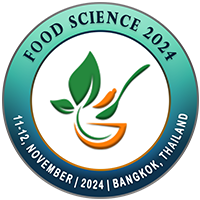
Stefan Backe
University of Skovde, SwedenTitle: Type 2 Diabetes – hard to select a healthy choice
Abstract
Aim: The study aims is to identify which types of musli contain high respectively low levels of
sugar, and which brands are involved.
Methods: The material consists of both qualitative interviews and observations from five grocery stores:
City Gross, Hemkop, Ica Maxi, Stora Coop and Willy´s. Observations were carried out in the
autumn of 2023 in the shops where I noted how they highlighted musli products with high and
low sugar content per 100 g of musli. The qualitative interviews had a semi-structured character
to get closer to the interviewees' perceptions and their perspectives on the visibility of healthy
musli options.
Result: ICA Maxi offered the most musli brands/products, with twelve contained high sugar content,
ranging from 17 g to 29 g per 100 g musli. Hemkop had five brands/products, with a
maximum sugar content of 25 g per 100 g musli. Stora Coop had six products with sugar
content from 5,5 g to 24 g per 100 g musli; City Gross and Willy's each offered four
brands/products with highest content of 25 g per 100 g musli.
Conclusion: Frebaco was the brand that reduced sugar content the most in its musli, with other brands
having at least 2.6 times as much sugar. Central bureaucracy is highlighted by several of the
informants as a significant obstacle to arranging healthy musli varieties with low sugar
content in one and the same place on store shelves.
Finally, what this study shows is that it is not easy for consumers to find low-sugar products
on department store shelves. More research and surveillance are needed to determine whether
the situation is the same among different department stores within the EU. Research is needed
into how type 2 diabetes is affected by high intakes of food products with high sugar content.
Biography
He is an Senior Lecturer in Public Health Science, School of Health Sciences, University of Skovde.

